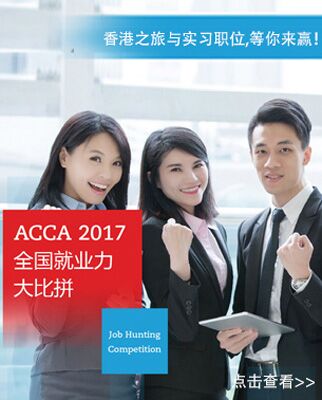今天ACCA考试网为大家带来的每日一练的题目来自于ACCA考试科目F4《公司法与商法》,请各位ACCAer笑纳,更多ACCA相关资源请关注微信公众号:china_acca。预祝各位ACCA考生在2016年9月份的ACCA考试都能取得好成绩。
问题:In the context of companies in financial difficulty,distinguish between and explain the operation of:(a)compulsory winding up;
问题:In the context of companies in financial difficulty,distinguish between and explain the operation of:(a)compulsory winding up;
解析:This question requires candidates to explain the meaning of the terms‘compulsory winding up’and‘administration’.
(a)Winding up,or liquidation,is the process whereby the life of the company is terminated.It is the formal and strictly regulated procedure whereby the business is brought to an end and the company’s assets are realised and distributed to its creditors and members.The procedure is governed by the Insolvency Act(IA)1986 and may be divided into three distinct categories:
Member’s voluntary winding up,Creditors’voluntary winding up,Compulsory winding up.
This question requires attention to be focused on the last of these three.A compulsory winding up is a winding up ordered by the court under s.122 of the IA 1986.Although there are seven distinct grounds for such a winding up,the most common reason for the winding up of a company is its inability to pay its debts.Section 123 provides that,if a company with a debt exceeding?750 fails to pay it within three weeks of receiving a written demand,then it is deemed unable to pay its debts.
On the presentation of a petition to wind a company up compulsorily,the court will normally appoint the Offi cial Receiver to be the company’s provisional liquidator.The Offi cial Receiver will require the present or past offi cers,or indeed employees of the company to prepare a statement of the company’s affairs.This statement must reveal:
–particulars of the company’s assets and liabilities;
–names and addresses of its creditors;
–any securities held by the creditors(fi xed or fl oating charges)and the dates on which they were granted;
–any other information which the Offi cial Receiver may require.
After his appointment,the Offi cial Receiver calls meetings of the company’s members and creditors in order to select a liquidator to replace him and to select a liquidation committee if required.Once again,in the event of disagreement,the choice of the creditors prevails.
Section 142 of the IA 1986 states that the functions of the liquidator are‘to secure that the assets of the company are got in,realised and distributed to the company’s creditors and,if there is a surplus,to the persons entitled to it’.Once the liquidator has performed these functions,he must call a fi nal meeting of the creditors,at which he gives an account of the liquidation and secures his release from the creditors.Notice of the fi nal meeting has to be submitted to the registrar of companies and,three months after that date,the company is deemed to be dissolved.





